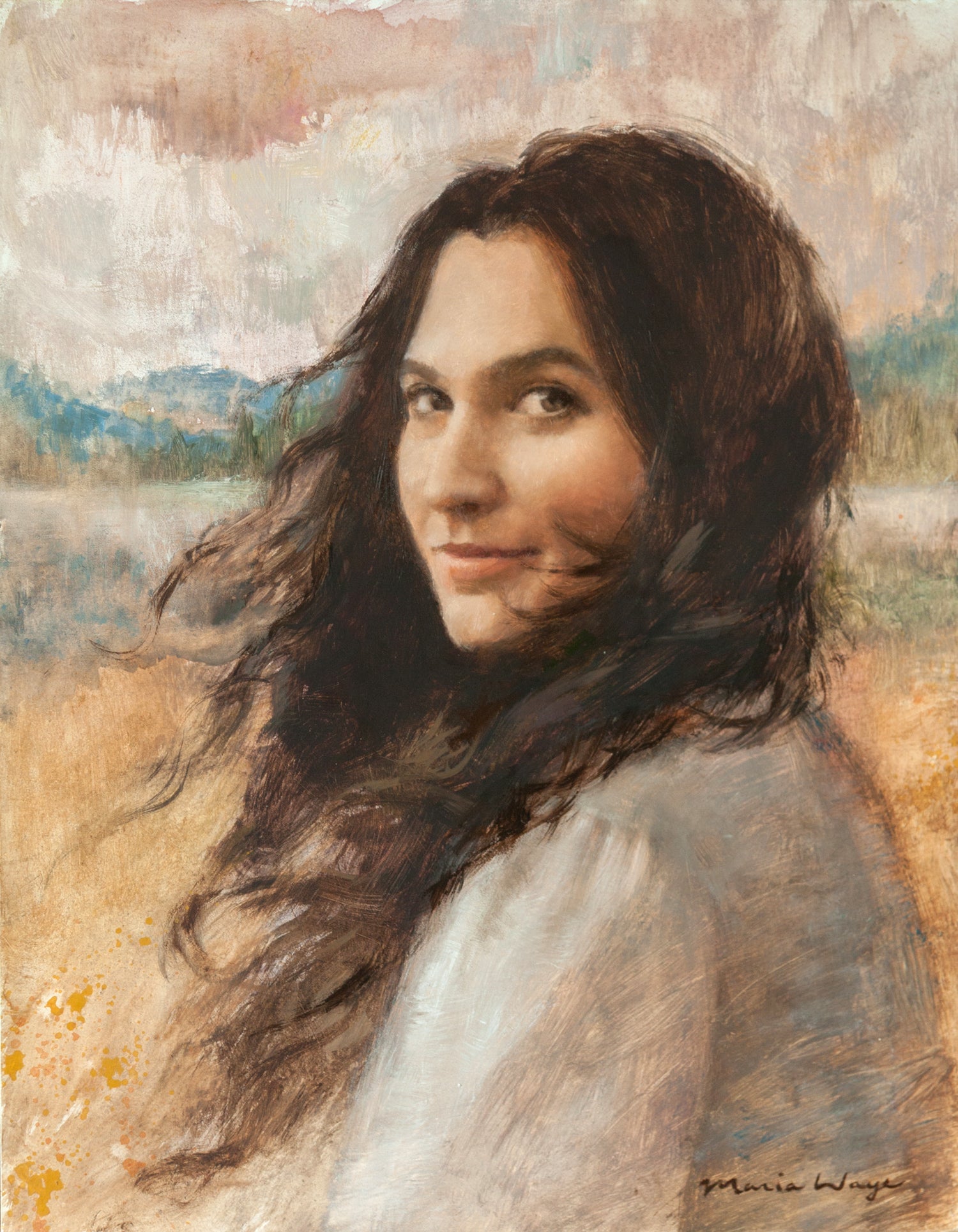Authentic Still Life and Floral Oil Paintings for Sale
Wiki Article
Exploring All About Oil Paintings: A Guide to Recognizing Their Elegance and Worth
Oil paintings have captivated audiences for centuries, providing a glance right into the artistic mastery of different ages. Their rich history is linked with innovative techniques and profound emotional expression. Understanding the materials and approaches behind these artworks can enhance appreciation. Additionally, the marketplace for oil paintings offers chances for collection agencies and investors alike. As one discovers this interesting world, the inquiry occurs: what makes an oil painting genuinely important?The Background of Oil Painting: A Trip With Time
Oil painting has origins that date back to ancient times, it absolutely thrived throughout the Renaissance, when artists found its versatility and abundant shade potential. Early instances can be mapped to the 7th century, with methods advancing notably throughout societies. The medium ended up being noticeable in Northern Europe in the 15th century, especially via the works of artists like Jan van Eyck, that pioneered its usage for in-depth realism and dynamic tones. This period noted a departure from tempera paints, permitting higher deepness and texture. As oil paint spread, it affected many artists, causing work of arts by popular numbers such as Leonardo da Vinci and Rembrandt. The tool's heritage continues, shaping the art world well right into modern-day times.Understanding Oil Paints: Materials and Techniques
As artists discover the globe of oil paints, they encounter a diverse range of materials and methods that specify this tool. The key components of oil paint include pigments, which offer color, and drying oils, such as linseed, that bind the pigments and assist in application. Numerous ingredients can change the paint's appearance and drying time, boosting versatility. Techniques like glazing, where transparent layers are developed, and impasto, which includes applying thick paint, enable different visual impacts. Furthermore, using brushes, combination blades, and even fingers can produce distinct appearances and coatings. Recognizing these strategies and products makes it possible for artists to fully express their creative thinking and attain the wanted effect in their artwork.The Role of Color in Oil Paints
Shade plays an essential role in oil paints, affecting both visual allure and psychological resonance. Recognizing shade theory essentials, including the relationships in between hues, can boost an artist's ability to convey state of mind and environment. Additionally, understanding color blending methods allows for higher depth and splendor in a painting's scheme.

Color Theory Basics
Understanding shade concept is vital for artists working with oil paints, as it creates the structure for producing aesthetically appealing and harmonious compositions. Shade concept encompasses the study of just how shades engage, the color wheel, and the relationships in between key, secondary, and tertiary colors. Artists make use of complementary shades to enhance contrasts and create focal points, while similar shades promote unity and cohesiveness within an item. Furthermore, the concepts of great and warm shades influence the assumption of deepness and space in a paint. Understanding these concepts enables musicians to control shade successfully, directing the visitor's eye and interacting their intended message. Mastery of shade theory inevitably enhances a musician's ability to share emotions and concepts through their work.
Psychological Effect of Shade
The emotional effect of shade in oil paintings plays a crucial function in how customers perceive and attach with art work. Colors stimulate specific sensations and state of minds, influencing the visitor's emotional state. As an example, warm colors like reds and oranges can produce a feeling of warmth and energy, while great tones such as blues and greens typically stimulate peace or introspection. Artists tactically select shade schemes to improve narrative components, leading the audience's emotional journey. The saturation and contrast of colors even more enhance these impacts, attracting interest and developing focus. Inevitably, the interaction of shades in oil paints not just boosts their visual allure yet additionally works as an effective tool for psychological expression, improving the visitor's experience and analysis.Shade Combining Techniques
While lots of elements of oil paint contribute to the general structure, grasping color mixing techniques is essential for achieving desired results and deepness. Shade mixing can be approached through various approaches, consisting of the subtractive and additive processes. Additive mixing entails incorporating shades of light, while subtractive mixing relies upon pigments, where shades blend to produce new tones. Musicians frequently utilize a limited scheme to produce harmonious jobs, recognizing the connections between key, second, and tertiary colors. Techniques such as glazing and scumbling better boost depth and luminosity. By masterfully blending colors, a musician can evoke feelings, create centerpieces, and accomplish a sense of realistic look, ultimately raising the painting's visual and emotional effect.Famous Oil Painters and Their Iconic Works

Famed for their mastery of color and strategy, oil painters have actually created some of one of the most celebrated artworks in history. Popular musicians like Vincent van Gogh astounded audiences with his stirring brushwork in "Starry Night," while Claude Monet's "Impression, Dawn" prepared for Impressionism. Leonardo da Vinci's "Mona Lisa" continues to be a long-lasting symbol of creative wizard, showcasing his ability in recording human expression. Rembrandt's "The Night Watch" shows his ingenious usage of light and darkness. Various other remarkable numbers consist of Pablo Picasso, that revolutionized modern art with his strong testing in works like "Les Demoiselles d'Avignon," and Georgia O'Keeffe, whose lively depictions of landscapes and flowers assisted define American modernism. Each artist's distinct style contributed significantly to the oil painting landscape.
How to Evaluate the Quality of an Oil Painting
Evaluating the top quality of an oil paint entails a mindful evaluation of craftsmanship techniques, as well as an analysis of shade and make-up. Observing brushwork, layering, and the application of paint can expose the artist's skill degree. In addition, the interplay of colors and the overall arrangement of elements add substantially to the paint's aesthetic value.Assessing Workmanship Methods
A precise assessment of craftsmanship methods is important for determining the quality of an oil paint. Evaluators should initially analyze the application of paint; thick, distinctive brushstrokes might recommend a proficient hand, while excessively uniform applications might indicate an absence of depth. oil paintings for sale. The layering technique is additionally important; the presence of lusters and differed thickness can enhance luminance and complexity. Furthermore, the quality of the products utilized, such as the canvas and pigments, plays a significant duty in durability and general aesthetic. Attention to information in aspects like edges and changes between colors mirrors the artist's commitment to their craft. Inevitably, these techniques add to the painting's emotional influence and market price, working as signs of the musician's skill and intentAssessing Color and Composition
While reviewing the quality of an oil paint, one need to concentrate on the interplay of color and make-up, as these components are fundamental to the artwork's general influence. Color options can develop and stimulate emotions state of mind; consequently, the musician's combination must be analyzed for harmony and contrast. A healthy structure routes the audience's eye and creates a feeling of unity. Artists commonly utilize strategies like the guideline of thirds or leading lines to enhance aesthetic rate of interest. In addition, the usage of light and shadow can add depth, boosting the three-dimensionality of the painting. Inevitably, a successful oil painting marries color and structure, involving the visitor and welcoming a much deeper appreciation of pop over to these guys the artist's vision and strategy.Caring for and Preserving Oil Paintings
Proper care and preservation of oil paintings is vital for preserving their honesty and long life. To shield these art work, it is essential to present them away from direct sunlight, which can cause fading and discoloration. Maintaining a stable environment with regulated temperature and humidity more help in stopping damage. Cleaning need to be done carefully utilizing a soft, dry towel, preventing any you can try here harsh chemicals that can hurt the paint or varnish. Regular examinations for indications of wear and tear, such as flaking or breaking, are advisable. When keeping or delivering oil paints, correct padding and framework are needed to avoid physical damage. Eventually, thorough care adds to the aesthetic charm and value of oil paintings in time.The Marketplace for Oil Paints: Spending and gathering
Comprehending the market characteristics for oil paintings is important for enthusiasts and capitalists alike. The worth of these artworks is influenced by different elements, consisting of the artist's online reputation, historical significance, and present trends. Collection agencies often look for items that resonate directly while taking into consideration potential admiration in value. Public auctions and galleries work as main places for trading, with costs changing based on demand and rarity. Buying oil paintings needs study right into the marketplace, as well as an understanding of credibility and provenance. Furthermore, arising artists may supply opportunities for considerable returns, while developed names can regulate high prices. Generally, a strategic strategy to collecting can produce both visual satisfaction and financial rewards.
Regularly Asked Inquiries
What Are the Ecological Influences of Oil Painting Products?
The environmental effects of oil painting products consist of the release of unpredictable natural substances (VOCs), hazardous waste generation, and resource removal for pigments. These variables add to pollution and environmental deterioration, elevating problems among environmentally conscious artists and consumers.Just How Do Different Canvases Impact Oil Paint Outcomes?
Various canvases influence oil painting results considerably. Surface, appearance, and absorbency top quality can modify paint application, drying out times, and shade vibrancy. Artists usually select details canvases to achieve preferred impacts and boost their artistic expression.Can Oil Paintings Be Recovered if Harmed?
If damaged, Oil paintings can certainly be restored. Specialist conservators use various strategies to fix rips, clean surfaces, and address discoloration, guaranteeing that the art work maintains its initial beauty and worth for future generations.What Are the Signs of an Original Oil Paint?
The signs of an initial oil paint include visible brush strokes, appearance variations, and an unequal canvas weave (oil paintings for sale). In addition, credibility may be validated with provenance, signatures, and the existence of a varnish layer distinct to oil mediumsJust How Has Innovation Influenced Modern Oil Painting Techniques?
Modern technology has significantly affected modern-day oil paint methods by presenting digital devices for preparation, improved products for appearance and longevity, and online platforms for offering and sharing art, thereby expanding artists' imaginative opportunities and target market get to. Oil paint has roots that date back to ancient times, it truly prospered throughout the Renaissance, when musicians discovered its flexibility and rich color capacity. The psychological influence of shade in oil paintings plays a crucial function in how audiences link and perceive with art work. While many aspects of oil painting contribute to the overall structure, understanding color mixing techniques is necessary for attaining desired effects and depth. Examining the high quality of an oil paint involves a mindful assessment read here of workmanship strategies, as well as an evaluation of shade and make-up. While reviewing the high quality of an oil paint, one should concentrate on the interaction of color and structure, as these elements are basic to the artwork's total effect.Report this wiki page